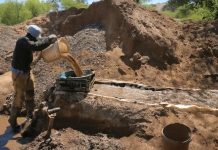Africa-Press – Zimbabwe. THE City of Bulawayo is hosting the annual Sanganayi/Hlanganani Expo, an exhibition and symposium for those involved in the tourism sector locally, regional and international.
However, domestic tourism has remained suppressed due to a number of factors, including exorbitant pricing of tourism services.
Tourism is generally driven by culture and affordability.
This implies that the local people should have a culture of holidaying, eating out and enjoying the flora and fauna.
The question of affordability is also intertwined with tourism.
The people should have disposable incomes and the services priced in sync with the economy.
Pricing in Zimbabwe is out of this world.
Breakfast at some of the hotels in resort towns costs between US$20 and US$30 per person.
This works out to between 15% to 10% of the monthly average income of those formally employed in Zimbabwe.
Tourism is driven by the average family. It means the pricing should consider the reality of the average person.
However, this thinking seems to have departed a long time ago from local tourism players.
Their pricing is for the top end of the market. Bed and breakfast at a decent hotel is on average US$120.
This is double or in some cases triple the average prices of similar establishments in the Sadc region.
National parks are the cornerstone of tourism. Tourists can enjoy the flora and fauna.
It is interesting that Zimbabwe has many national parks including Matopos in Bulawayo, Kyle in Masvingo, Chivero in Harare, Darwendale, Nyanga, Hwange, Gonarezhou, Matusadonha, Kariba and Victoria Falls.
It is worrying that most locals have not been able to enjoy these parks because of the general pricing of services in the sector and day passes.
Many a time, the few who can visit these places are at these resorts as participants to a meeting or workshop and usually have no time or resources to enjoy the national parks.
It was refreshing to notice that South Africa has a different approach to promoting its tourism sites to locals.
This week, all national parks could be accessed free by locals.
The South African National Parks (SANParks) made the announcement on their official website.
The notice read: “On September 8, 2024, South African National Parks will host a celebratory event at Marakele National Park to kickstart the 19th annual SA National Parks Week, which will be held from September 9 to 13, 2024 and extended to September 14 and 15 at selected national parks. During this period, free access is granted to most of the 21 national parks under the management of South African National Parks.”
SANParks has been doing this for nearly two decades.
Affording ordinary South Africans only for a week every year to enjoy their natural resources.
Not only does the free access shift perceptions, but they reinforce the idea that locals should also enjoy these national facilities.
The notice was clear — “please take special note of the fact that free access to national parks at this time does not include free access to accommodation facilities and other tourist activities”.
SANParks says the week has seen an influx of day visitors in all participating parks since its inception in 2006.
“SANParks also uses this time to cultivate a sense of pride in South Africa’s natural, cultural and historical heritage as protected and preserved by the national parks system,” it said.
It added: “While offering an opportunity to experience South Africa’s rich natural and cultural heritage, attention is also drawn to the sustainable development practices made possible through partnerships with key role players like communities living adjacent to national parks, businesses, scientists and tourists.”
It is interesting that by casual observation, at most Zimbabwean national parks, you come across more foreigners than locals.
It is even more worrying that the majority of the people who reside in Chiredzi, Hwange, Zambezi escarpment, Victoria Falls or Nyanga have never enjoyed these resorts.
The closest locals come in contact with the wildlife is when wild animals come into their villages foraging for food or water due to climate change.
It may seem a joke, but the reality is the majority of Zimbabweans did not know about Cecil the lion until his untimely death at the hands of an American “poacher”.
Oops, hunter!
The deliberate Zimbabwean government policy of privatising national parks has excluded the majority from enjoying the national parks.
Many local and foreign investors have taken the prime places and fenced them off for private gain.
What can or should be done to make our national parks national?
The answer is simple: the economy should thrive again and services should not be priced out of reach of the majority.
Zimbabwe should outgrow the Rhodesian “dual enclave” and develop an inclusive and sustainable economy.
The post-colonial leaders should move away from “replacing” and “mimicking” the colonialists as Frantz Fanon wrote in The Wretched of the Earth.
It is important that leaders have an ideological leaning that seeks better living for the “many and not the few” as Labour in the UK has campaigned in the past.
The drive for an upper-middle income status by 2030 should be not only quantitative, but also qualitative.
It serves Zimbabwe no better when the top 1% enjoy the national tourism resorts or even own them.
That type of inequality breeds insecurity.
The economy should be grown in a manner that the average family has enough food, better housing, good public education and public health.
That the same average family has savings and can afford to go on holidays and enjoy domestic tourism resorts.
Above all, ZimParks should develop tailor-made packages for average Zimbabweans to enjoy their national parks or even borrow a leaf from SANParks and give Zimbabweans a week of free access to national parks.
It is doable.
Zimbabwe is our country too.
I’m out!
For More News And Analysis About Zimbabwe Follow Africa-Press






